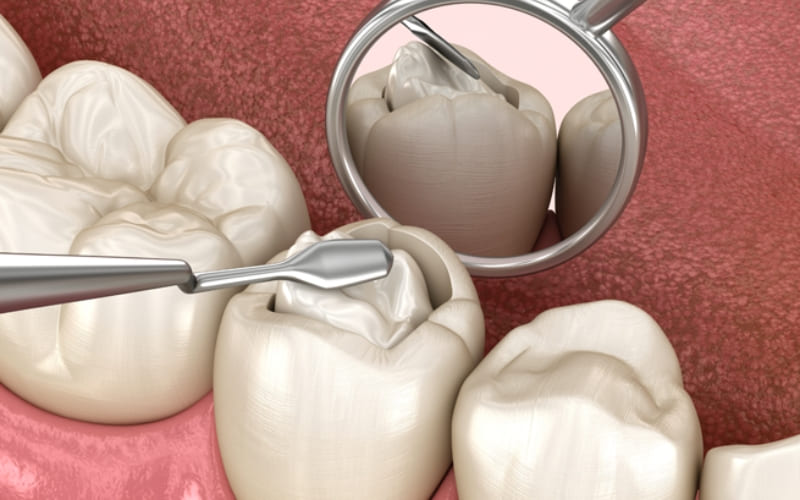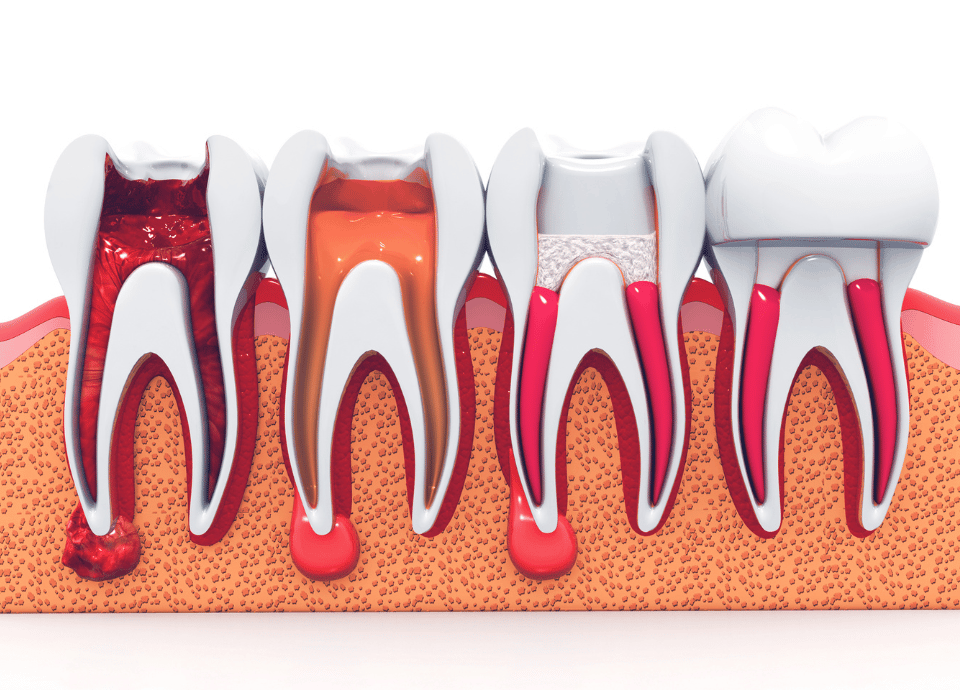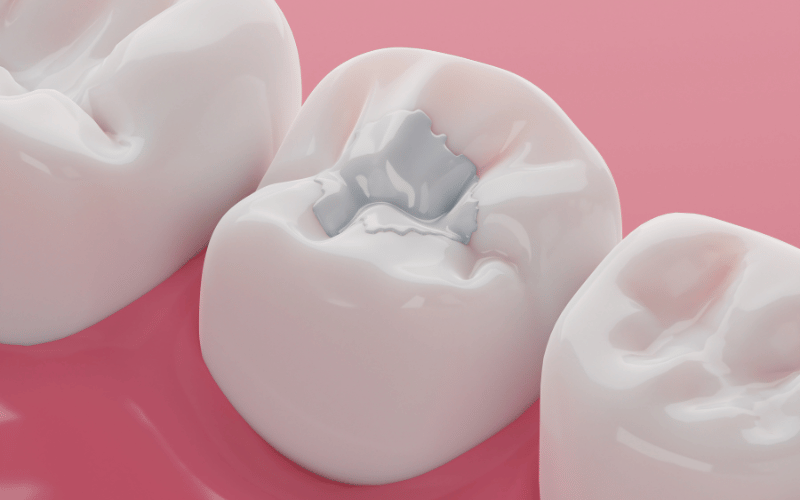Call: (810) 674-3060
Is It Worth Getting White Fillings?

Introduction
Dental health is vital to overall well-being, and dental fillings are a common solution to address cavities and tooth decay. Traditionally, amalgam fillings are recommended. However, in recent years, white fillings have gained popularity due to their aesthetic advantages.
This article will explore the world of white fillings and whether they are worth considering. We will discuss the advantages and things to consider when choosing fillings and provide insight into making an informed decision about oral health.
What are White Fillings?
White or composite or tooth-colored fillings are made from acrylic resin and finely ground glass-like particles. They are designed to match the color of your natural teeth, making them a discreet and aesthetically pleasing option for filling cavities.
Composite fillings have come a long way in terms of durability and strength, and they can be used for both front and back teeth. Placing fillings involves removing the decayed part of the tooth, cleaning the area, and then filling it with the composite material. A special light hardens the material, bonding it securely to the tooth.
Is it Worth Getting White Fillings?
The decision to get fillings is personal and depends on various factors, including your oral health needs and cosmetic preferences. To help you make an informed decision, let’s explore the advantages of tooth-colored fillings and what you should consider when choosing the right type of dental fillings.
Advantages of White Fillings
1. Aesthetics:
One of the most significant advantages is their natural appearance. Unlike traditional amalgam fillings, white fillings are customized to match the color of your teeth. This makes them virtually indistinguishable from your natural teeth, particularly important for front teeth or visible areas when you smile.
The ability to maintain your smile’s aesthetics while addressing dental issues is a compelling reason for the consideration.
2. Improved Bonding:
White fillings bond well with the tooth structure. This strong bond helps support the remaining tooth, making it less likely to break or fracture. In contrast, amalgam fillings do not bond as securely with the tooth; over time, they can cause the tooth to weaken.
3. Minimized Tooth Removal:
White fillings require less tooth removal. This is because they bond directly to the tooth’s structure, preserving more of the healthy tooth. Less tooth removal is advantageous for your teeth’ long-term health and strength.
4. Reduced Sensitivity:
Amalgam fillings can sometimes lead to tooth sensitivity, especially when exposed to hot and cold temperatures. On the other hand, white fillings do not conduct temperature changes in the same way, reducing the likelihood of sensitivity or discomfort after the procedure.
5. Mercury-Free:
Amalgam fillings contain mercury, which has raised concerns about potential health risks. White fillings are mercury-free, making them a safer and more environmentally friendly choice.
6. Versatility:
White fillings can be used for various dental issues, including repairing chipped or cracked teeth, closing small gaps, and reshaping teeth for cosmetic purposes. Their versatility makes them a popular choice for various dental concerns.
7. Durable:
While composite fillings were once considered less durable than amalgam fillings, advances in dental technology have significantly improved their longevity. With proper care, white fillings can last for many years, making them a reliable choice for dental restoration.
Things to Consider When Choosing Fillings
Before deciding, it is important to consider the following factors:
1. Location of the Filling:
The choice may depend on the location of the cavity. White fillings are an excellent choice for visible areas, while amalgam fillings may be more suitable for back teeth where appearance is less of a concern.
2. Size of the Cavity:
Larger cavities may require the strength and durability of amalgam fillings. Composite fillings are generally better suited for smaller to medium-sized cavities.
3. Cost:
White fillings are typically more expensive than amalgam ones. Consider your budget and dental insurance coverage when making your decision.
4. Dentist’s Recommendation:
Trust your dentist’s expertise and recommendation. They will consider your dental needs and help you make an informed choice that best suits your situation.
Wrap Up!
The decision ultimately depends on your needs and preferences. White fillings offer numerous advantages, including natural appearance, improved bonding, minimal tooth removal, reduced sensitivity, and mercury-freeness.
They are a versatile and durable option for dental restoration. However, factors such as the location and size of the cavity, cost considerations, and your dentist’s recommendation should also play a crucial role in your decision-making process.
When considering, it’s essential to consult with a trusted dental professional who can evaluate your oral health and provide personalized guidance. At Burton Family Dental, our team of experienced dentists is dedicated to helping you achieve optimal oral health and providing the best solutions for your dental needs.
Whether you choose white fillings or another option, maintaining your dental health is essential for your overall well-being and confidence in your smile.
To learn more about Dental Fillings, read this article: 5 Main Types Of Dental Fillings Explained With Their Benefits.




